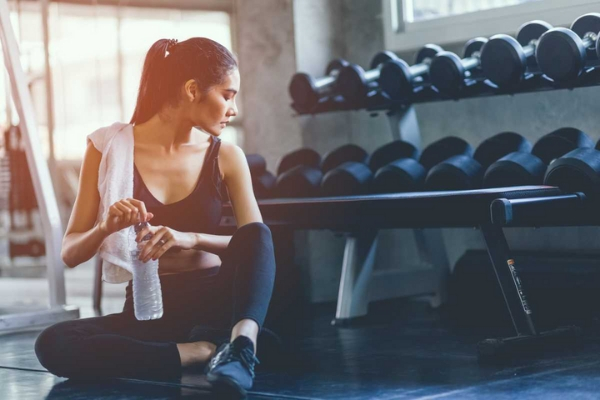Gyms are usually open 362 times a year, excluding Christmas, New Years Day & Easter Sunday. 17:00 is possibly the busiest time in the gym, there are a lot of people there and they could be carrying anything. We think that now is a good a time as ever to go back through hygiene in the gym and outline how you can stay hygienic to repel any unwanted infections/diseases that you can contract in the gym.
In this blog post, we’re going to be outlining the basic levels of hygiene such as washing your hands to prevent the spreading of unwanted diseases. As well as how you can also maintain a good level of hygiene whilst you’re around the free weights section.
Things You Can Catch In The Gym
When you exercise anywhere, including a gym, health club or any kind of sports club, you will be exposed to a lot of sweaty, bacterial clothes and equipment. Since bacteria and viruses thrive in moist conditions, it means that they can linger on exercise-equipment and clothes for a longer period of time than you think.
According to WebMD, fungal infections of the skin are very common among people who work out regularly such as Athlete’s Foot, Jock Itch or Yeast Infections. Cold & Flu can also linger on the gym equipment as well and that can lead you for a bad few days. That’s why it’s essential to look after yourself & others in the gym so you don’t put yourself at risk of getting ill.
Good Hygiene Practises
WASH YOUR HANDS WITH SOAP
A basic one yes, and it’s one that people understand, but not one that everyone follows all the time. Washing your hands before a workout helps kill any of the harmful bacteria/viruses on your hands which you may transmit onto someone else. Washing your hands after your workouts again helps kill the bacteria/viruses on your hands, but for ones that you may have picked up whilst working out.
You should aim to wash your hands for around 20 seconds, or as Boris Johnson says – Happy Birthday, twice. After you’ve rinsed well after using soap, try to opt for an air dryer or a clean town. If you’re unable to get access to soap and water, hand sanitisers are a good alternative. An alcohol-based hand sanitizer which has a 60% alcohol formula is an adequate solution. However, seek soap and water at the earliest opportunity.
SANITISE GYM-EQUIPMENT
The free-weights section has the potential to be a very dangerous place when you think about how many people have used that kettlebell/dumbbell that day and what they could be carrying. That’s why you should wipe down the gym equipment you’re using (including resistance & cardio machines) with a disinfectant spray or wipe. That means you can get your pump on without worrying about any of the harmful bacteria that could be there. You could also wipe down the equipment after you use it to do the next person a favour.
You can also bring in items such as sweat-towels and boxing gloves to further reduce the chance of infection via gym equipment.
If you’re very grossed out by germs in the gym, you could check out our article on home-workouts and see how you can benefit from exercise in your own home.
CATCH SNEEZES & COUGHS
Dr Ravi Tomar told Cosmopolitan that sneezes can send the droplets up to a range of 8 metres, and when the machines are as closely-packed as they are in the gym, it wouldn’t seem unreasonable that they can land on several types of equipment/people. This is why you must be careful when coughing or sneezing and you should look through washing your hands again after you’ve caught it and re-sanitising the gym equipment if you believe it to be contaminated.
Also, be wary for other people coughing and sneezing around you and again, follow the above steps if you think you have been exposed to a cough/sneeze.
SHOWER AFTER YOUR WORKOUT
When you shower after your workout, you are able to rid your full body of all the harmful bacteria that have accumulated during your workout and it also prevents bacteria from spreading even more. Bacteria spread in damp, moist clothes so even if you’re going back to the gym the next day, make sure you wash your gym clothes first and don’t just give them the old sniff test as it can lead to skin infections.
Bacteria and viruses can live for a long time in the right types of surfaces, and clothing is no exception.
COVER WOUNDS
It’s not uncommon for your skin to break in the middle of a gruelling workout, if you have a cut or an open wound – cover it with a waterproof bandage or stay away from the gym until it heals completely as you may catch an infection due to the open nature of the wound.
Since we’ve covered hygiene in the gym, we thought it might be good to share the NHS guide to hygiene to have a read through as well.
